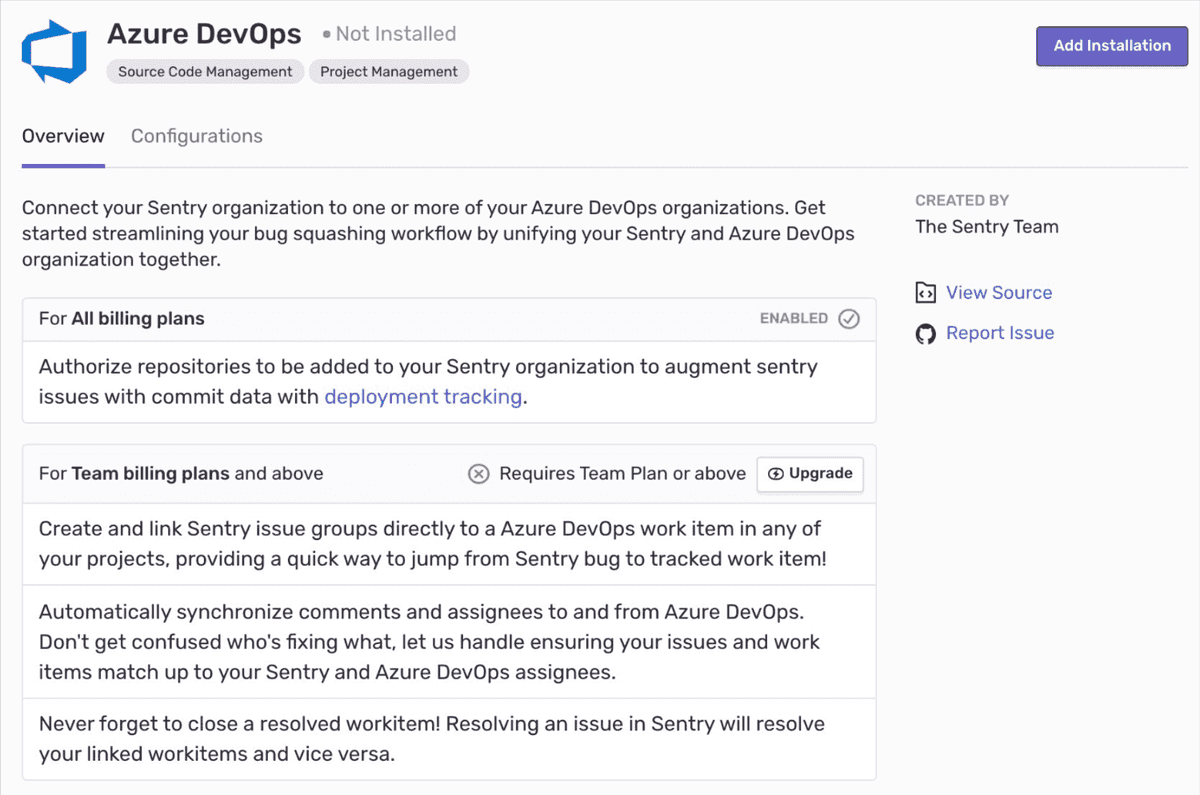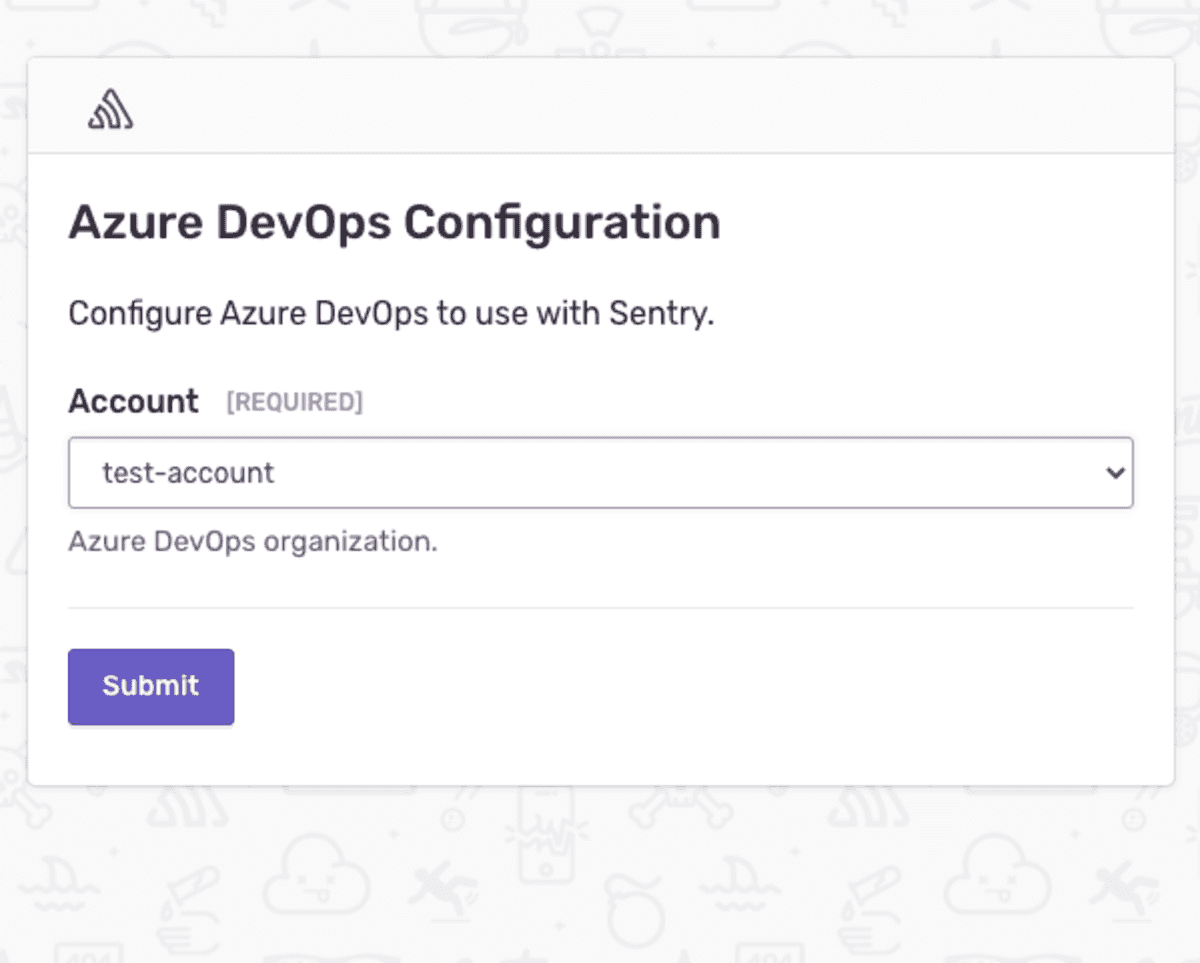Azure DevOps
Track and resolve bugs faster by using data from your Azure DevOps (formerly known as Visual Studio Team Services, VSTS) commits.
Install
To install this integration, Sentry organization owner, manager, or admin permissions and Azure organization owner permissions or being a user in the Project Collections Administrators group are required.
Navigate to Settings > Integrations > Azure DevOps and click "Add Installation".
An Azure DevOps install window should pop up. Select the Azure DevOps account you'd like to link with Sentry, and press Submit.
Azure DevOps should now be enabled for all projects under your Sentry organization, but you'll need to configure the features below.
Configure
Use Azure DevOps to track commits and issue management.
Commit Tracking
Commit tracking allows you to hone in on problematic commits. Uncover which commits likely caused an issue, and allow your team to resolve issues by referencing the issue number in a commit message.
For more details, see the full documentation on commit tracking and releases.
You’ll also see that the author of the suspect commit will be listed as a suggested assignee for this issue. To assign the issue to the suggested assignee, click on their icon.
Issue Management
Issue tracking allows you to create Azure DevOps issues from within Sentry, and link Sentry issues to existing Azure DevOps Issues.
Note
Manual issue management is available to organizations on Team, Business, and Enterprise plans.
Automatic issue management is available to organizations that include transactions in their Business and Enterprise plans.
Issue management can be configured in two ways - automatically or manually.
Automatically
To configure issue management automatically, create an Issue Alert. When selecting the action, choose Create a new Azure DevOps work item.
An Azure DevOps work item will be created automatically when the alert has been triggered.
Manually
Once you’ve navigated to a specific issue, you’ll find the Linked Issues section on the right hand panel. Here, you’ll be able to create or link Azure DevOps issues.
Issue Sync
Sync comments, assignees, and status updates for issues in Sentry to Azure DevOps, to minimize duplication. When you delegate an issue to an assignee or update a status on Azure DevOps, the updates will also populate in Sentry. When you resolve an issue in Sentry, the issue status will automatically update in Azure DevOps.
Note
To configure Issue sync, navigate to Organization Settings > Integrations, and click "Configure" next to your Azure DevOps instance. On the following page, you’ll see options of what information you’d like synced between Sentry and Azure DevOps.
Resolve in Commit
Once you send commit data, you can start resolving issues by including fixes <SENTRY-SHORT-ID> in your commit messages. For example, a commit message might look like:
Prevent empty queries on users
Fixes MYAPP-317When Sentry sees this, we’ll automatically annotate the matching issue with reference to the commit, and later, when that commit is part of a release, we’ll mark the issue as resolved. The commit must be associated with a release. Otherwise, if the commit is squashed, Sentry won’t know when the commit has been released, and the issue may never be marked as a regression.
Troubleshooting
No accounts during installation
If you reach the account selection page during the Azure Devops installation process (step 4 in the instructions above) and see that there are no accounts available to select, please check the following possibilities:
- Ensure you are logged into the account connected to your Azure DevOps organization.
- Double-check that your account is a Microsoft Account (MSA).
- For single sign-on, see Azure Active Directory SSO.
- If you have multiple accounts in Azure DevOps, open this link to Azure DevOps in another tab, select the correct account, then reinstall.
Our documentation is open source and available on GitHub. Your contributions are welcome, whether fixing a typo (drat!) to suggesting an update ("yeah, this would be better").





